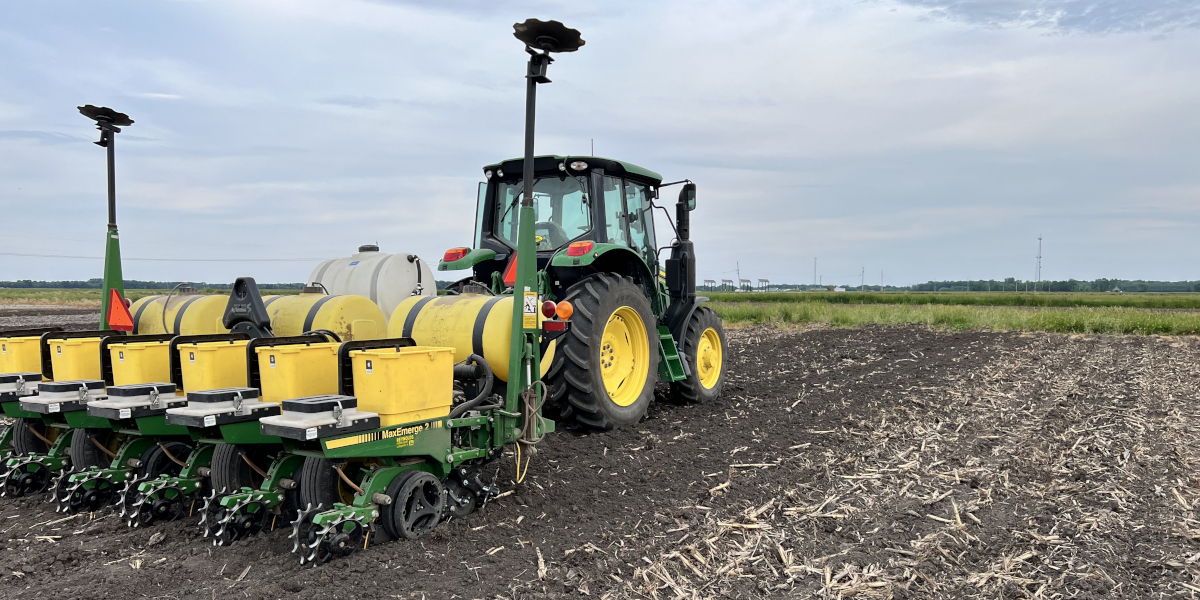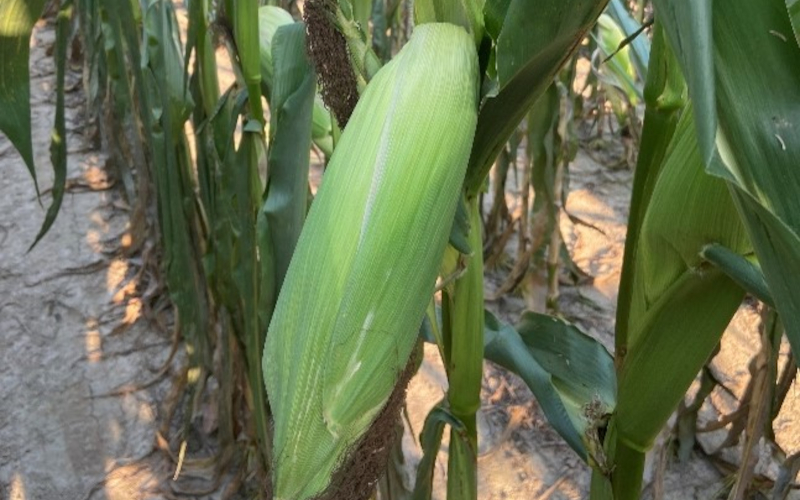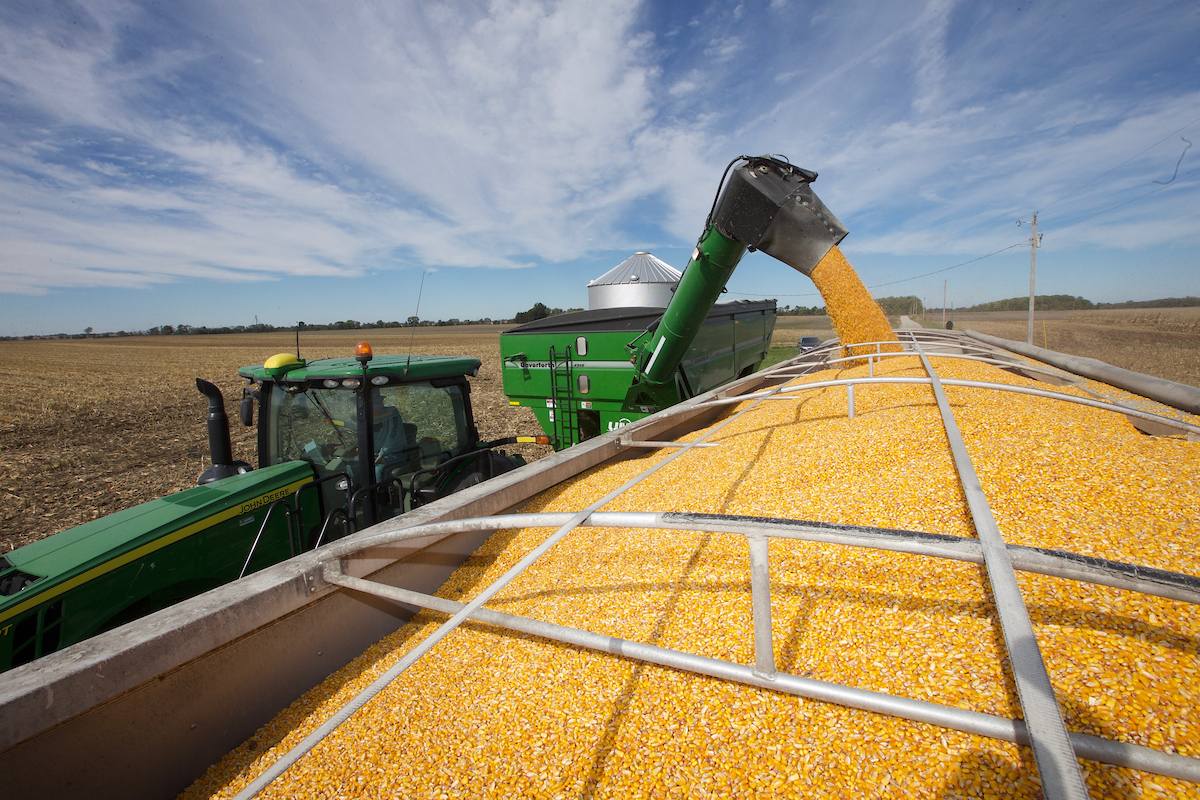"Flattened" or "Root Lodged" Corn caused by Heavy Rain and Wind - Now What?
Recent storms and heavy rainfall brought on by the remnants of Hurricane Beryl have crossed parts of Indiana this week and brought excessive winds which has resulted in corn being “flattened” from lodging in certain areas of the state. At first sight, corn that has fallen over can be daunting to look at, and cause some serious concern on what may happen next. However, assessing the potential damage and impact on grain yield can be challenging. Therefore, it is important to be patient and wait at least 4 days to allow damaged corn plants to produce visual signs of whether or not they may recover (Nielsen, 2013). Symptoms of recovery can be shown by plants beginning to right themselves upward (“goosenecking”, Figure 1), the re-establishment of roots, and the re-orienting and growth of leaves. The overall severity and recovery potential for corn can depend on the growth stage of the plant, soil moisture at the time of the wind event, root mass structure, hybrid planted, and the severity of the leaning or bending of the plants (Lindsey and Thomison, 2022; Rees et al., 2020).

Figure 1. Corn “goosenecking” as it reorients itself following root lodging. Picture taken by D. Quinn in West Lafayette, IN 2021.
The majority of corn in Indiana is currently at or approaching pollination. Therefore, the larger the plant, the more vulnerable it is to lodging without stalk breakage (root lodging) or stalk breakage (greensnap) from the combination of heavy rainfall and strong winds. “Root lodging” of corn is the most likely culprit to occur this week and is often observed with the combination of strong winds and high soil moisture levels, which can result in corn roots being pulled out of the soil. Although this symptom can look devastating, yield impacts are often highly dependent on when the damage occurs and what growth stage the plant is in (Lindsey and Thomison, 2022; Figure 1). If the majority of plants are able to re-orient themselves, and if this recovery occurs prior to corn pollination, little impact on pollination success will be observed. Corn plants have been shown to upright themselves fairly quickly (~ 3-4 days) after an initial wind event when in the rapid growth phase. However, if a plant can’t reorient itself properly, some leaves can become shaded and a reduction in photosynthesis can occur. Furthermore, if this damage occurs close to the beginning of pollination, the leaves of neighboring, lodged plants may shade or cover some of the exposed silks, thus causing poor pollination.
Table 1. Corn grain yield reduction and number of barren plants caused by the incidence of root lodging at various growth stages in Ohio. Data acquired from 3-year research trial conducted by Lindsey and Thomison, 2022.
| Growth Stage | Yield Reduction | Barren Plants |
| -- % -- | -- % -- | |
| V10 | 5 | 2 |
| V13 | 22 | 6 |
| VT/R1 | 43 | 9 |
| R3 | 33 | 1 |
The occurrence of root lodging can also highlight poor early-season root development (side-wall compaction, insect feeding) and be more prevalent in fields with high plant populations (>35K plants/acre). However, if soil moisture is adequate for root growth, leaves can still intercept sunlight, and plants have adequate time to upright themselves to place silking ears in proper position prior to pollination, root lodged corn fields can recover well and yield loss will be minimal. In contrast, for corn that has already reached pollination and early grain fill, yield losses will be more significant as the plant has less flexibility, time, or ability for the stalks have to reorient themselves properly.
In addition to root lodging, the most significant damage that can happen to a corn plant following a storm is if stalks are broken or “green-snapping” occurs. But, before deciding how severe the damage from a snapped stalk may be, it is important to identify where on the stalk the breakage occurred. Plants that snap above the harvestable ear, can still produce an ear, however yield will likely be lower than desired and neighboring plants that are snapped may cause shading and reduce potential ear size. Green-snap below the harvestable ear is much more severe and results in direct loss of yield potential. Research has shown that corn yield can be reduced by 0.5 to 1% per 1% of plants that are broken or green-snapped (Elmore and Ferguson, 1999; Rees et al., 2020).
Dan Quinn, PhD
Assistant Professor of Agronomy
Extension Corn Specialist
Purdue University
djquinn@purdue.edu






